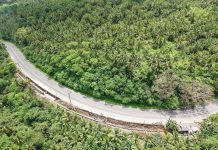TACLOBAN CITY – The Japan International Cooperation Agency (JICA) is putting up P298.44 million to make the Guiuan Meteorological Radar System in Eastern Samar operational by September 2015 after it was heavily damaged by last year’s supertyphoon Yolanda.
JICA has set aside funds to replace radar equipment, after Japanese experts inspected the site in December last year. “Procurement of equipment is ongoing. Crafting will follow, which is a longer process. Installation will be done on January 2015,” said Nakamura Hayato, JICA’s project formulation advisor on disaster management.
The reconstructed radar system is expected to start sending data to the Philippine Atmospheric, Geophysical and Astronomical Services Administration (Pagasa) by September 2015.
“The radar itself was stable after typhoon Yolanda (international name: Haiyan) and there will be no major construction work. We just need to replace equipment to make it functional,” Nakamura added.Guiuan, the first town where Yolanda made first landfall on November 8, 2013, was chosen as the location of the radar project in 2009 as it faces the Pacific Ocean.
The Guiuan Doppler Radar Station in Sapao village adopts the new system developed by Japan Radio Co. using integrated chips to transmit sound waves as far as 480 kilometers away to determine wind velocity, rainfall intensity and speed, volume of rainfall and area coverage. “This is a JICA project that will utilize the highest level of technology. Japan is investing on improvement of the meteorological radar system in because many typhoons in Philippines also enter Japan. This is not just the first line of defense for Philippines but this will also send warning to us,” Nakamura explained.
Before the typhoon, the Guiuan project was almost complete and partly operational. In fact, JICA was scheduled to turn over the project on November 29, 2013. The first of the three Japan technology doppler radars has been operational since March 2012 in Catanduanes. The same facility, built for P560 million by the Japanese-Filipino consortium, was also installed in 2012 in Aparri, Cagayan.
“The reconstruction in Guiuan will highly consider building protective measures so it won’t be damaged easily by future typhoon. It is designed in such a way that it can be repaired by Pagasa after turnover,” Nakamura told reporters. With the dysfunctional Guiuan doppler radar facility, the state weather bureau relies on a eteorological satellite in monitoring typhoon movement in Pacific Ocean, which only transmits hourly data.
“Doppler radar can observe the occurrence, movement, distribution and amount of rainfall and wind speed over a large area in real time,” he said. On November 13, 2009, officials signed the grant agreement for the construction of three doppler radars amounting to P1.7 billion under the official development assistance of the Japanese government.
The rehabilitation of the Guiuan facility is a component of the $46 million grant for the rebuilding of Yolanda-hit areas. (SARWELL Q. MENIANO)



